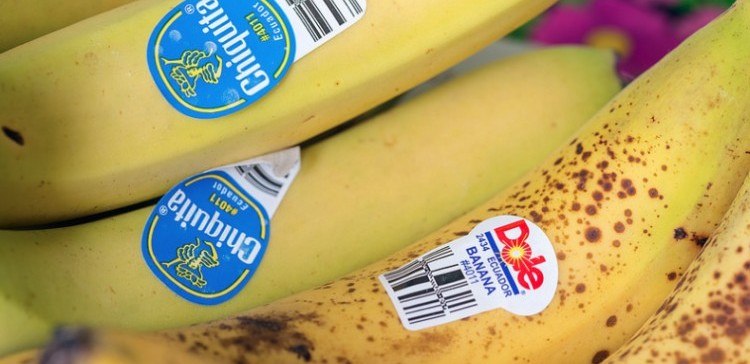You know those stickers that can be found on most fruits and veggies in grocery stores worldwide? If you’ve ever bought produce from a grocery chain, you’ll recognize the ones we’re talking about. I’m sure for some of us who used to or currently work in a grocery store, those stickers are burned into our minds (I am one of those people). They usually have a a bar code on them for scanning and a PLU code, which helps your friendly neighborhood cashier identify what type of produce you’re buying.
But these unassuming stickers are more telling than you’d think. While the PLU is the “price lookup” number and identifies the fruit or veggie, it also helps to identify something else: how the produce was grown. By correctly reading this code, you can tell if the fruit was genetically modified, organically grown or produced with chemical fertilizers, fungicides, or herbicides
The story behind where your fruits and vegetables actually came from has been right under your nose all along! You just have to know how to analyze the labels and the PLU number. It’s actually a lot easier than you’d imagine
Here’s the basics of what you need to know about the truth behind PLU codes.
If there are only four numbers in the PLU, this means that the produce was grown conventionally or “traditionally” with the use of pesticides. The last four letters (or only four, in this case) of the PLU code are simply what kind of vegetable or fruit you’re buying. An example is that all bananas are labeled with the code of 4011.
If there are five numbers in the PLU code, and the number starts with “8”, this tells you that the item is a genetically modified fruit or vegetable. Genetically modified fruits and vegetables have been tampered with in an unnatural way; essentially, produce that has been genetically modified was created in a lab or over decades of artificial selection, and cannot be found in nature. A genetically engineered (GE or GMO) banana would be: 84011
If there are five numbers in the PLU code, and the number starts with “9”, this tells you that the produce was grown organically and is not genetically modified. An organic banana would be: 94011

Interestingly enough, the adhesive used to attach the stickers is considered food-grade, but the stickers themselves aren’t safe to consume.
If you’re looking to be hyper aware of what fruits and vegetables have been treated with pesticides and other chemicals and which have not, you’ll want to check out the homepage for the Environmental Working Groups. The EWG has compiled two lists to help consumers identify which produce is generally cleaner and which produce is generally tampered with; the Clean Fifteen and the Dirty Dozen.
The Top 5 for the “Clean Fifteen” produce are:
Avocados
Sweet Corn
Pineapple
Cabbage
Sweet Peas (Frozen)
The Top 5 for the “Dirty Dozen” produce are:
Strawberries
Apples
Nectarines
Peaches
Celery
For the full lists, food news, and additional food rankings, make sure to check out the EWG online.
What do you think of this sticker revelation? Will this change how you shop for produce? Share your thoughts on this in the comments section below. For more information, check out this informative video below on the truth behind food labeling.

